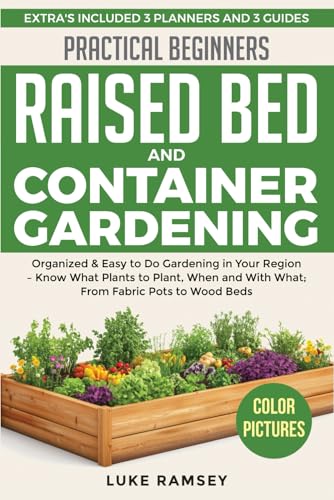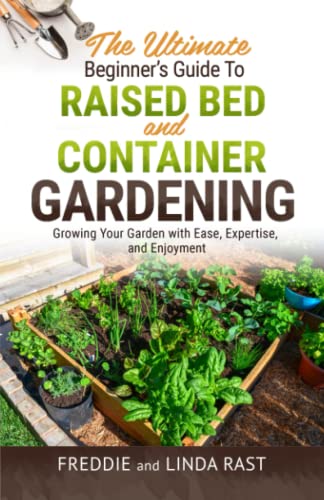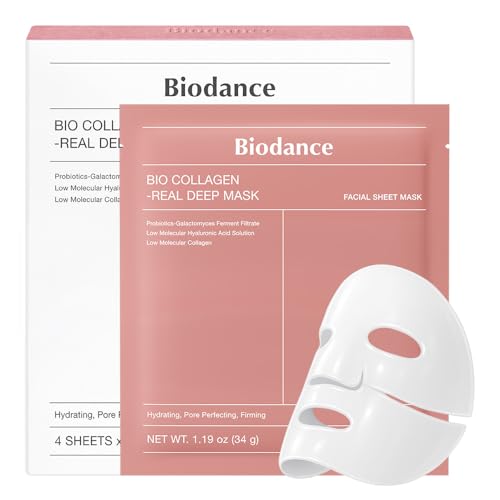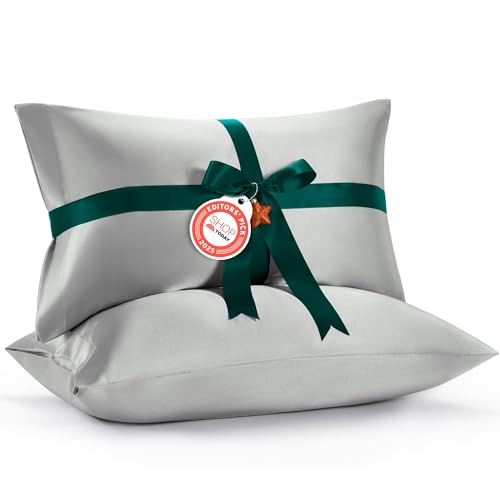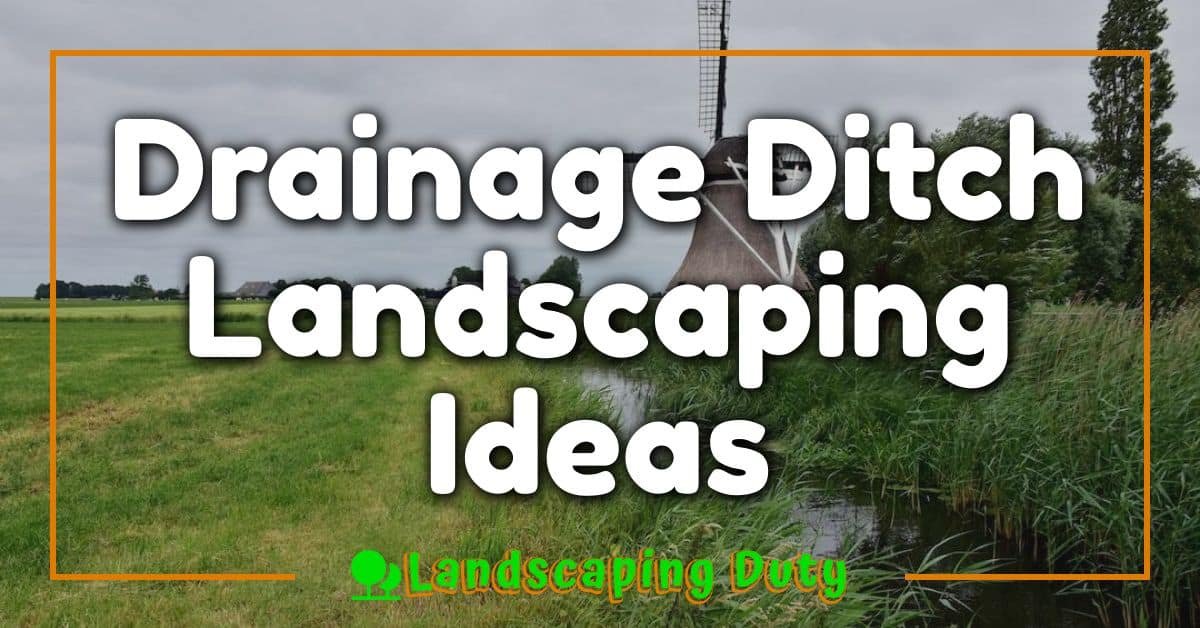Creating a raised planter box has always been a rewarding project for me. There’s something special about watching plants thrive in a space you’ve designed yourself. Whether you’re a seasoned gardener or just starting out, building your own planter box can transform your outdoor area into a vibrant oasis.
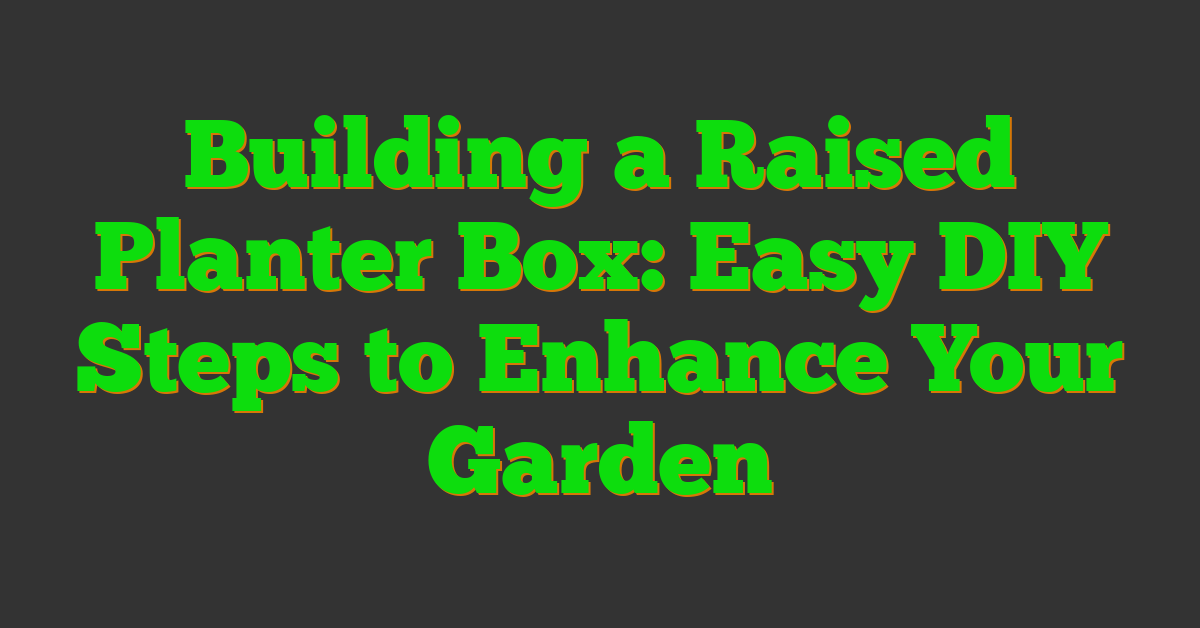
I love how versatile raised planter boxes are. They not only add beauty to your garden but also make it easier to manage your plants. With a few simple materials and some basic tools, you can craft a planter that suits your style and needs. Plus, it’s a fantastic way to make gardening more accessible, especially if you have limited space or want to protect your plants from pests.
Join me as we dive into the steps of building a raised planter box. I’ll share tips and tricks to ensure your project is a success, and before you know it, you’ll have a stunning addition to your garden that you can proudly call your own.
Benefits of Building a Raised Planter Box
- Improved Drainage: Raised planter boxes allow excess water to escape, preventing root rot and waterlogging.
- Enhanced Soil Quality: Control the soil mix to ensure optimal conditions for plant growth.
- Weed Reduction: Fewer weeds grow, minimizing competition for nutrients and water.
- Increased Accessibility: Elevated beds make gardening tasks more comfortable, reducing strain on the back and knees.
- Extended Growing Season: Raised beds warm up faster in spring, enabling earlier planting and longer harvest periods.
Choosing the Right Materials
Selecting the right materials ensures your raised planter box lasts and thrives. I consider factors like durability, cost, and aesthetics when making my choices.
Types of Wood
Wood is a popular choice for planter boxes due to its natural appearance and ease of use. Here are common options:
- Cedar: Naturally resistant to rot and insects, cedar lasts up to 20 years. Its rich color adds beauty to any garden.
- Redwood: Durable and decay-resistant, redwood withstands harsh weather conditions. It’s pricier but offers excellent longevity.
- Pine: Cost-effective and widely available, pine requires treatment to prevent rot. It’s ideal for budget-friendly projects.
- Pressure-Treated Lumber: Treated to resist insects and decay, this lumber is affordable. Ensure it’s labeled safe for garden use to avoid harmful chemicals.
Alternative Materials
If wood isn’t your preference, consider these alternatives for building your planter box:
- Metal: Steel or aluminum boxes provide a modern look and high durability. They resist pests and weather but may heat up quickly in the sun.
- Composite: Made from recycled wood fibers and plastic, composite materials offer low maintenance and resistance to rot. They mimic wood’s appearance without the upkeep.
- Concrete Blocks: Durable and versatile, concrete blocks create sturdy planter boxes. They retain heat, which can benefit plant growth in cooler climates.
- Plastic: Lightweight and affordable, plastic planter boxes are easy to move. Choose UV-resistant types to prevent fading and cracking.
| Material | Durability | Cost | Maintenance |
|---|---|---|---|
| Cedar | High (20 years) | High | Low |
| Redwood | High (20+ years) | Very High | Low |
| Pine | Medium (10 years) | Low | Medium (treatment) |
| Pressure-Treated | Medium (15 years) | Low | Low |
| Metal | High | Medium | Medium (rust prevention) |
| Composite | High | Medium-High | Low |
| Concrete Blocks | Very High | Medium | Low |
| Plastic | Medium | Low | Low |
Choosing the right material depends on your budget, desired lifespan, and maintenance willingness. I weigh these factors to select the best option for my raised planter boxes.
Planning and Designing Your Planter Box
Planning the size and shape sets the foundation for my planter box. It aligns with my garden space and plant requirements.
Determining Size and Shape
- I measure the area where I place the planter box to fit my garden space.
- I choose standard sizes like 4×8 feet or 2×4 feet to accommodate most vegetables and flowers.
- I select shapes such as rectangular, square, or circular to match my garden layout and aesthetic.
Incorporating Drainage Solutions
- I install drainage holes at the planter’s base to ensure uniform water flow.
- I use gravel or small rocks at the bottom to facilitate drainage and prevent soil erosion.
- I add a layer of landscape fabric to keep soil particles from clogging the drainage system.
Step-by-Step Construction Guide
Building a raised planter box involves precise steps to ensure durability and functionality. I’ll guide you through each stage to make the process straightforward.
Cutting and Preparing Materials
First, measure and mark your lumber based on the planned dimensions, such as 4×8 feet or 2×4 feet. Cut the wood pieces using a saw, ensuring straight edges for accurate assembly. Sand all cut edges to prevent splinters and prepare the surfaces for sealing. Gather necessary materials: cedar boards, a power drill, screws, a measuring tape, and safety gear like gloves and goggles.
Assembling the Box
Arrange the cut pieces into a rectangular or desired shape on a flat surface. Start by attaching the side panels to the base using galvanized screws, ensuring each corner is square. Reinforce the joints by adding corner brackets for extra stability. Use a level to check that the box sits evenly, adjusting as needed to maintain a uniform structure.
Finishing and Sealing
Once assembled, sand the entire planter box to smooth any rough areas. Apply a high-quality, outdoor sealant or wood stain to protect against moisture and UV damage. Allow the sealant to dry completely, following the manufacturer’s instructions. Install drainage holes if not already done, and add a layer of gravel at the bottom before filling with soil. Your raised planter box is now ready for planting.
Plant Selection and Soil Preparation
Choosing the right plants ensures a thriving raised planter box. I consider factors like sunlight, climate, and space when selecting plants. For sunny spots, tomatoes, peppers, and basil thrive. In shaded areas, I opt for leafy greens, ferns, and impatiens. Native plants often require less maintenance and adapt better to local conditions.
Preparing the soil is crucial for plant health. I use a mix of high-quality garden soil, compost, and perlite to enhance drainage and fertility. The ideal soil pH ranges between 6.0 and 7.0, suitable for most vegetables and flowers. Testing the soil helps me adjust pH levels with lime or sulfur as needed. Adding organic matter improves soil structure and provides essential nutrients. Proper soil preparation creates an optimal environment for robust plant growth.
Recommended Soil Mix
| Component | Percentage |
|---|---|
| Garden Soil | 40% |
| Compost | 40% |
| Perlite | 20% |
Plant Selection Checklist
- Sunlight Requirements: Full sun, partial shade, full shade
- Water Needs: High, medium, low
- Growth Habit: Upright, trailing, bushy
- Harvest Time: Early, mid, late season
Selecting plants and preparing the soil carefully sets the foundation for a successful garden.
Maintenance and Care Tips
Maintaining your raised planter box ensures its longevity and keeps your plants healthy. Follow these essential tips to care for your planter box effectively.
Regular Inspection
Check your planter box every month for signs of wear or damage. Look for cracks, rot, or loose joints. Addressing issues promptly prevents further deterioration and maintains the structure’s integrity.
Cleaning the Planter Box
Remove debris and plant residue after each growing season. Use a hose to wash away soil buildup and gently scrub surfaces with a brush if needed. Cleaning prevents mold growth and keeps the planter box ready for new plants.
Soil Maintenance
Refresh the soil annually to maintain fertility. Remove old soil and replace it with a new mix of garden soil, compost, and perlite. This practice enhances drainage and provides essential nutrients for your plants.
« Budget-Friendly Landscaping Ideas to Enhance Your Outdoor Space How to Grow a Knot Garden: Complete Guide for a Stunning Backyard »
Watering Practices
Water your plants consistently based on their specific needs. Use a drip irrigation system to ensure even moisture distribution. Proper watering prevents root rot and promotes healthy plant growth.
Seasonal Care
Prepare your planter box for different seasons. In spring, inspect for winter damage and apply a fresh layer of mulch. In fall, protect the box from frost by covering it or moving it to a sheltered area. Seasonal care extends the lifespan of your planter box.
Pest Control
Monitor your plants for pests regularly. Use natural remedies like neem oil or introduce beneficial insects to manage pest populations. Effective pest control maintains plant health without harming the environment.
Reapplying Sealant
Apply a protective sealant every two years to wooden planter boxes. Sealant prevents moisture penetration and protects against UV damage. Regular sealing preserves the appearance and durability of your planter box.
Proper Storage
If you move your planter box seasonally, store it in a dry place during off-seasons. Elevate it off the ground to prevent moisture accumulation. Proper storage reduces the risk of damage and extends the planter box’s life.
Addressing Drainage Issues
Ensure drainage holes remain clear to prevent waterlogging. Check for blockages after heavy rains and remove any debris that may impede water flow. Proper drainage maintains soil health and prevents plant stress.
By following these maintenance and care tips, your raised planter box will remain a beautiful and functional addition to your garden for years to come.
Conclusion
Building a raised planter box has been such a fulfilling project for me. Watching my garden transform with each plant thriving makes all the effort worthwhile. I love how versatile and adaptable these planter boxes are, fitting perfectly into my outdoor space.
It’s amazing how something you build with your own hands can bring so much beauty and functionality to your garden. Whether you’re a seasoned gardener or just starting out, creating a raised planter box is a rewarding experience that offers both practical benefits and aesthetic charm. I can’t wait to see what you’ll grow in yours and how it will enhance your gardening journey.




